Opinion

Ft Collins, CO –-(Ammoland.com)- The “Back Curve”
“The Earth is round, so that we never see too far down the road.” ~ Karen Blixen
Conversations with “precision riflemen” often get into tedious, esoteric mathematical realms, and usually very quickly!
Many factors influence the bullet during the brief fraction of a second (sometimes longer) while it is in free-flight between when it departs the muzzle and the point of ultimate impact (exterior ballistics), but the two main ingredients are:
- (1) air friction.
- (2) gravity..
Density of air varies, of course, with elevation above sea-level, humidity, temperature, and dust/smoke content, but gravity relentlessly pulls the bullet toward the center of the Earth. Wind blowing against the flying bullet, from any direction, will push it (to some degree) off its still-air trajectory.
And, there are other things to consider, from the rotation of the Earth, to “ballistic drift”, to the “Coriolis effect,” even the gravitational pull of Jupiter, but all these are of concern mainly to the artillery officer, generally irrelevant for the practical rifleman!
Shape, diameter, and density of the missile itself also significantly affects the way in which it passes through the air. And of course, intermediate impact with grass and brush will greatly influence missile’s trajectory, thus the location of the ultimate impact point.
With modern, autoloading, military rifles, the bore-line/sight-line span is six centimeters (2.5 inches), and we consider any bullet that impacts within a circle with a six-centimeter radius to be sufficiently accurate for most serious purposes.
So, the instant our bullet departs the muzzle, it is already six centimeter low. With sights adjusted correctly, the bullet will then climb until it crosses the sight-line.
With 5.56×45 (223) caliber, I recommend this intersection take place at 40m. This is the “initial intersection.”
The bullet then continues to rise until, under the influence of gravity, it starts to fall back toward the sight-line. This highest point in the bullet’s flight, the “maximum ordinate,” is reached at 140m. At this range, the bullet is six centimeters above the sight line, but no more.
As it continues downrange, the bullet then falls back toward the sight-line, crossing it once more (this time on the way down) at 240m. This is the “second intersection.”
The bullet then continues to fall until it is, once again, six centimeters below the sight-line. This takes place at 260m.
So, between point-blank and 260m, the bullet is never more than six centimeters away from the sight-line, “all other things being equal.”
We call this “maximum point-blank range,” or MPBR. Beyond 260m, we are in the “back-curve zone.”
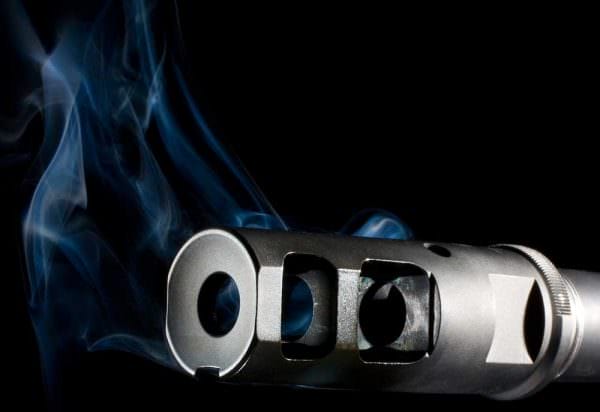
However, the foregoing holds true only when the rifle itself, as it is fired, is perfectly horizontal. When a shooting position necessitates the rifle be fired from a “rotated” position, the six-centimeter standard collapses after 150m.
Thus, I tell students that their M4 is basically a 150m gun. Within that range, it is deadly accurate, no matter the shooting position, no matter the wind, no matter most other factors.
The “back-curve zone” is that portion of the trajectory which lies between maximum point-blank range and the ultimate point of bullet impact. Any time a rifleman is working in ranges that involve the “back-curve” of the trajectory, that is, after the bullet has fallen more than six centimeters below the sight line (after the second intersection), the path of the bullet becomes harder and harder to predict.
The rotating bullet is designed to remain stable as it travels through air, but only so long as it remains supersonic.
The speed of sound in dry air, at sea level, at 70 degrees F, is 342 m/s (1,125 f/s). When bullet velocity degrades to the point when it transitions into subsonic velocities, stability progressively suffers. Modern rifle bullets are not designed for stability at subsonic velocities!
Yet, today’s snipers are amazing is their ability to skillfully use the back-curve zone, and they enjoy my admiration! But, the rest of us, under “field conditions,” using generic military rifles, will squander much ammunition trying (mostly in vain) to get reliable hits there.
“Practical/Usable Effective Range”
I suggest therefore, that the “practical/usable effective range” of your defensive rifle excludes the back-curve zone. The “practical/usable effective range” of your rifle is thus confined to MPBR, often a good deal less than that, as noted above. The “academic/theoretical range” of your rifle may extend into the back-curve zone, but with issues described above.
When the rifleman tries to sight-in his rifle for a particular, extended range (beyond MPBR), he must adjust the sighting device so that the second intersection will occur at a range that necessitates a maximum ordinate in excess of six centimeters. That means, when he subsequently attempts a shot at a shorter range (without a sight adjustment), it will probably be high. In fact, the rifle will shoot “dead-on” only at the exact, extended distance for which it has been sighted. Without another, subsequent sight adjustment, “holding over” or “holding under” will be necessary for all other ranges.
The shooter will thus find himself with a “single-purpose rifle.”
As you might imagine, I don’t recommend adjusting rifle sights in the middle of a fight!
When you want to get into sniping, a single-purpose, long-range sniper rifle (in appropriate caliber) is just the ticket! But, it requires great devotion, tedious attention to detail, anal maintenance, and an attention-span far in excess of mine!
When training for real fighting and equipping ourselves with an M4, XCR, SCAR, et al, fitted with a red-dot, in 5.56×45 caliber (we can probably include 300 Blackout also), so long as we stay within MPBR, we’ll enjoy great success, and we won’t squander irreplaceable ammunition on dubious shots!
“A man has to know his limitations” ~ Harry Callahan (played by Clint Eastwood) in the 1973 feature film, “Magnum Force”
/John
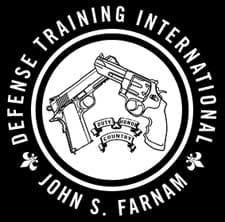
About John Farnam & Defense Training International, Inc
As a defensive weapons and tactics instructor John Farnam will urge you, based on your own beliefs, to make up your mind in advance as to what you would do when faced with an imminent and unlawful lethal threat. You should, of course, also decide what preparations you should make in advance, if any. Defense Training International wants to make sure that their students fully understand the physical, legal, psychological, and societal consequences of their actions or inactions.
It is our duty to make you aware of certain unpleasant physical realities intrinsic to the Planet Earth. Mr Farnam is happy to be your counselor and advisor. Visit: www.defense-training.com


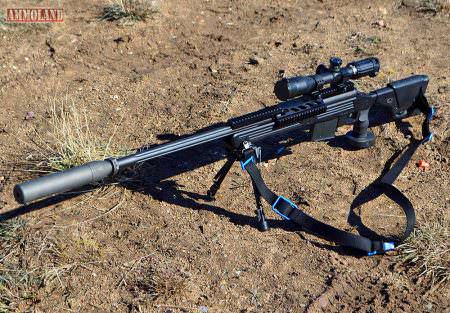
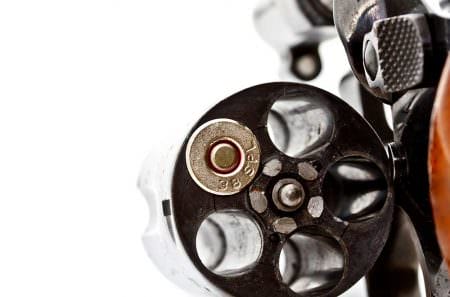

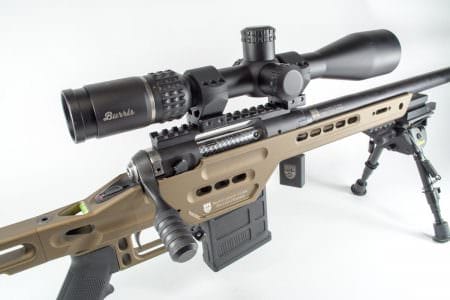
An M4 with 16 inch barrel is not as limited as this article implies. It is easily effective to 400+ yards, not 160 meters, or (176 yards.) Just sight it in at 25 meters, not 40 meters, and additionally learn how to shoot.
If you want to learn how to master the Rifleman’s Quarter Mile, the traditional effective distance of an expert with a rifle, sign up for an Appleseed event. Events are held all around the country. See: https://Appleseed info.org for more info.
The bullet does NOT climb as it leaves the muzzle. The barrel is already inclined upward to compensate for bullet drop. I guess you failed physics class.
+1 Geoff.
One possibility is that he misunderstood the physics. Another is that he understood them, assumed we all did, and used shorthand for bullet initially climbs due to barrel alignment.
If we want to start playing gotcha games, then we could start bringing up other things such as tye regulation of iron sights assuming a certain amount of rise due to recoil before the round leaves the muzzle, and so on.
Or we could avoid the petty attacks. That might be better.
This is a very interesting article (including the comment on bullet trajectory). I have not considered the maximum point blank range (MPBR) explicitly, as I usually shoot with respect to the distance at which my rifle is sighted in and use holdover / under to correct for longer or shorter ranges. I am then shooting for no deviation from the line of site at the range to the target. At what range, then, should I sight in my rifle to take advantage that out to the effective range of the rifle I can shoot within a 12 cm circle (+/-… Read more »
This is why I zero my M4 sopmod at 400 meters both irons and optic. At close range you have to aim with a lower 65 moa quadrant or aim for the forehead.
First: “However, the foregoing holds true only when the rifle itself, as it is fired, is perfectly vertical.”
I presume the author meant “horizontal”? Or am I misunderstanding the principle?
With that out of the way,.. In this story I’ve heard two other sets of figures for 1st and 2nd intersections. The one I was taught was 50 (yards) – 200 (yards). I’ve never heard a distinction for whether irons or glass optics are used.
Pretty sure he meant vertical, such that the optic is perfectly over center of the bore. Any rotational can’t to the Rifle will throw off your point of impact from there.
In response to @John Dunlap: Those of us who have been shooting for a while know exactly what Farnam was talking about. Since you want to pick it apart and make it complicated for first timers let me sort it out by reprinting this: (Note: the two graphs in the article did not come through) Bullet Trajectory: Fact and Myth By Mike Nelson Myths and errors regarding the path of a bullet generally come from a lack of understanding of the forces acting on the bullet before, during, and after its path through the barrel. This article will deal with… Read more »
John Farnham likely knows a lot more than I do about secondary ballistics, and it’s application to shots fired from an M4 carbine. The points you raise are valid. Mr. Farnham however, in common with many people, misuses the artillery term ‘point blank’, which is commonly the furthest distance a shot will impact without having to adjust a piece’s sights to compensate for the fall of shot. So will someone please come up with a new, cool and modern term for the space or area immediately in front of a smallarm’s muzzle? We all know what he meant, but that… Read more »
Do we really need to? Most people understand, I hope, that there can be two different meanings to a term, technical and common especially when dealing with the military vs civilian life. To change the civilian interpretation after all these decades would just add to the confusion. Most are not even aware of the military usage or, if they are, understand the difference and let it slide. This is one nit we don’t need to pick.
As much effort has been expended over the years to promote the metric system in the US, most people (including me) continue to think in inches and yards. I guess we’re simply not sophisticated enough to do Euro math. I find articles like this interesting, but I get tired of having to convert values to common American usage.
Boy, you and I will never disagree on that one!
@CFR, The very fact that it is European is enough reason to refuse to conform. But if you have to convert meters to yards for good visualization, just add ten percent, and you are good to go. A yard is approximately ten percent shorter than a meter, rough figuring. So you need 10 percent more yards, fast figuring. For example: 100 meters is 110 yards. If someone tells you the distance is 325 meters, you need to add 32.5 to know the distance in yards. Fire for effect.
From the NIST website: “In 1893, metric standards, developed through
international cooperation under the auspices of
BIPM, were adopted as the fundamental standards
for length and mass in the United States. Our
customary measurements — the foot, pound, quart,
etc. — have been defined in relation to the meter
and the kilogram ever since.”
https://www.nist.gov/sites/default/files/documents/pml/wmd/metric/1136a.pdf
C F, with computers and the Internet conversions are “just a click away”. Most computers and cell phones have conversion calculators. Also, estimates are usually good enough. I travel fairly often, so I get to play metric more often than most. The temperature scale is the one that used to get me in the most trouble, but I have devised an easy way to convert mentally, and have memorized 10, 20, 30 C, and 40, 50, 60, 70, 80, and 90 F (1 C is 1.8 F). I usually don’t travel to places with weather extremes, so those temps are… Read more »
Funny! I have an M-16 Army Rifle Marksmanship Manual No, 23-9 Dated July 1989 That says the crossover is 25 and 250 meters! I guess that you never read it? I wonder how much more of this article you got wrong?
Article says “recommended” as in author’s choice. Either selection usually requires adjustment to obtain for a particular device; firearm.
Another funny thing is I have never fired a rack-grade weapon that did not require some initial and continual sight maintenance.
Respectfully,
Bamabubblehead
Before I go calling ANYONE wrong and that would include me saying you’re wrong or Farnam’s wrong I’d take a long hard look at the variables. That manual was written 29 years ago. Has the rifling changed? Have the fps with military ammo used changed that would have affected this GENERAL rule?
You jumped to a conclusion without even asking why there is a difference between what an Army Manuel says and what Farnam wrote. Frankly, your attitude is that of a presumptuous jerk.
Roy, is that with iron sights or a scoped rifle? I suspect the iron sights are lower making the cross-over closer. But I don’t have an M-4 nor an M-16, and do not know the specs to verify that. Obviously every rifle would have different specs. I took this column as general advice. The cross-over distance would also be affected by powder charge (especially affecting reloaders), barrel length, and bullet weight, all factors affecting muzzle velocity. With these and other factors, I believe, as he explained, that is why he stated the MPBR is 150 meters. Obviously that is just… Read more »
The specific rifles Farnham mentioned later in the article were in M4 configuration, with 14.5-16” barrels instead of the M-16’s 20” barrel, and so with lower muzzle velocities, too.
Your apples to oranges comparison does not refute Farnham. Your attitude is obnoxious.
My goodness, these acolytes of Mr. Farnam worship him so strongly that they can’t even be civil when someone politely disagrees. I would imagine, from what I have read about Mr. Farnam, that he would be greatly disappointed by the rude comments made by these individuals. He was always a gentleman, and would never have stooped to the behavior displayed here.
Refuting an argument never requires calling the other guy obnoxious, a jerk, etc.
The author states the bullet…will continue RISE to the crossover point. That is absolutely not correct–the instant a bullet leaves the barrel–any barrel from any firearm or even artillery it begins to drop. The way the author stated this is not correct, and I hope he does not believe exactly what he wrote, is confusing–especially to people who are not well experienced with firearms and ballistics, etc. I am sure he could have explained this a bit better to demonstrate the effect he is writing about.
John, that would be like saying an artillary projectile falls out of its barrel as it is arcing skyward. Yes, we understood his statement to mean upward trajectory, not actual rise. Yes, trajectory and LOS of the barrel are different, as are the trajectory to the LOS of the sight as he explained in the column.